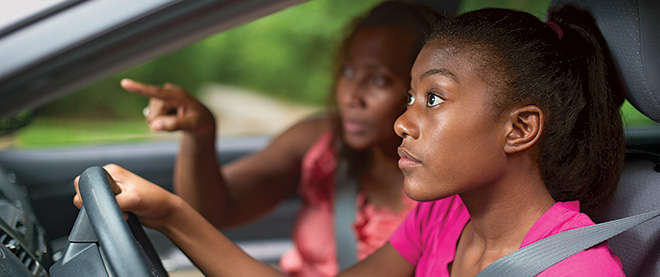Why there is no such thing as a safe teen driver
… and what parents must do before they hand over the keys
Gary S. Chapman / Getty Images
Share

At 17, Reid Hollister had already shown himself to be a “smart driver,” says his father, Tim. “He never had any issues with confidence in where the vehicle was in the lane. He wasn’t a [erratic] driver. He was very coordinated.” There was, it seemed, no good reason to refuse him the car on that typical Friday in 2006. It wasn’t until several months later, after Reid died in a one-car crash “of speed and inexperience,” as Tim puts it, that the Connecticut father recognized the mistakes he’d made in handing his son the keys that December night. “I started to think, ‘Oh my God, why did I allow him to do that?’ ” he recalls. “What was I thinking—or not thinking—at the time?”
Those realizations prompted Hollister, a lawyer, to write Not So Fast: Parenting Your Teen Through the Dangers of Driving. “The book is not grief therapy,” he says in an interview. “The book is what I like to think of as public service.” It contains information gleaned while he served on a state task force in 2007 aimed at improving Connecticut’s teen driving laws. (Several adolescents died in crashes soon after Reid, which provoked an outcry.) The premise of the book is simple, if unsettling: “There is no such thing as a safe teen driver.” Teenagers are not, physiologically speaking, mature enough to get behind the wheel by themselves, research shows. “There are things about teen drivers that no amount of training can overcome,” says Hollister. “And both parent and teen need to understand that.”
Specifically, Hollister discovered that the prefrontal cortex, the part of the brain in charge of restraint and judgment, is the last piece that develops. And that can take until age 25—long after many adolescents start driving. What’s more, says Hollister, “it takes three to five years [of experience] before crash rates of new drivers come into the range that we consider relatively safe.” Compare that to the average 40 hours or so of driving required to get licensed in many places. “It’s a bat of an eyelash.” Compounding these risks is the tendency, proven in vision-sciences studies, of new drivers to look at “the perimeter of their own car” more than “down the road at the developing traffic situation,” he continues, “which is why we see teens getting into crashes—they don’t anticipate.”
Knowing all this, Hollister has devised ways for parents to better protect their adolescents. First, “act like an air traffic controller.” Get their destination, route, an alternative route, a timetable for their excursion and the names of passengers. Make a communication plan. Check the weather, and their alertness. Next, “make a ceremony” of giving the keys—perhaps keep them in a padlock—to bring “seriousness” to the occasion. Never let a teen driver joyride, because crashes are more likely than during “purposeful driving.” And consider installing a tracking device in the vehicle to ensure teens go where they claim. And above all, parents and teens should sign an agreement (Hollister wrote one), outlining how the car should be used, with penalties for violations.
These methods are familiar to Gary Direnfeld, a social worker in Dundas, Ont., who used to work at a brain rehab centre—where he saw first-hand the devastating effects of car crashes. By the time his son got his licence in the 1990s, Direnfeld had founded the “I Promise” program, which promotes a parent-teen driving agreement, too; it is downloaded 350 times a month. Direnfeld also instituted strict rules: His son couldn’t use the car between 11 p.m. and 7 a.m., and he could only drive for specific purposes and with particular passengers. “Those are the issues that most correlate with the likelihood of a crash,” Direnfeld explains. “So if you can control for those to any degree, you’re improving your odds.”
This level of vigilance might sound too intense or tedious, given many parents “look forward to their children getting their licence because it emancipates them from chauffeuring,” says Direnfeld. They’re underestimating the risks. “There’s a myth out there: the degree to which I have a good kid, my child is less likely to be involved in a crash. There’s no data to support that. The operative issue is that they’re kids. They’re teenagers.” And that’s the danger.